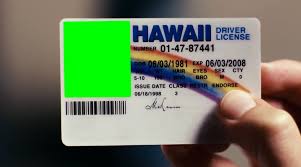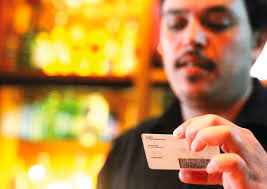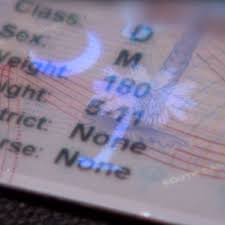fake ID features
Table of Contents:
- Introduction to Fake IDs: An Evolving Market
- Overview of fake IDs and their uses
- The changing dynamics of counterfeit identification
- Why understanding fake ID features matters
- Fake ID Features: A Breakdown of Critical Components
- Material and texture
- Holograms and microprinting
- Barcodes and magnetic strips
- UV-sensitive features
- Personalization and customization options
- Security countermeasures
- Technological Advancements in Fake ID Production
- 3D printing for enhanced detail
- Machine-readable codes and digital replication
- Advanced holographic imprints
- Anti-counterfeit features used in legal IDs
- Fake ID Market Analysis: Understanding Supply and Demand
- Market size and growth trends
- Regional market analysis
- Key players in the fake ID industry
- Competitor analysis
- Target Audience: Who Buys Fake IDs and Why?
- Demographic breakdown: Age, gender, location
- Motivations: Underage use, novelty, access to restricted areas
- Discreet purchasing behavior and preferences
- Ethical concerns and public perception
- Common Concerns for Fake ID Users and Producers
- Legal risks and consequences
- Privacy and safety concerns for buyers
- Scams and low-quality ID concerns
- Detection and prevention methods by authorities
- Fake ID Quality: How to Identify Premium Products
- Authenticity benchmarks: Weight, feel, and design
- Comparison of high-quality vs. low-quality fake IDs
- Review of manufacturers with the best reputations
- Customer testimonials and case studies
- The Future of Fake IDs: Trends and Predictions
- Influence of digital identity on physical IDs
- AI and blockchain integration in fake ID production
- Increasing sophistication of detection technologies
- Conclusion: Key Takeaways for Buyers and Sellers
- Summary of product features and technological aspects
- Future considerations for market trends
- Final thoughts on ethical and legal implications
1. Introduction to Fake IDs: An Evolving Market
The fake ID industry has undergone significant transformations over the past few decades. Once regarded as a crude, small-scale business, today's fake ID market has become more sophisticated and accessible due to advances in printing technology, global connectivity, and online purchasing platforms. With increasingly realistic designs and features, these counterfeit documents can mimic the authenticity of official identification cards, making them harder to detect and control.
Understanding fake ID features is essential for various stakeholders—law enforcement agencies, businesses, and even individuals considering purchasing these products. With both legality and morality at stake, it's crucial to recognize the intricacies involved in the production and distribution of fake IDs.
The need for counterfeit identification spans multiple industries and demographics. From underage individuals seeking to gain access to age-restricted venues to professionals requiring access to exclusive areas, the demand for high-quality fake IDs has grown. This article will explore the features, market trends, and target audience surrounding the fake ID industry while also addressing key concerns such as security risks and evolving production technologies.
2. Fake ID Features: A Breakdown of Critical Components
The production of fake IDs has become an art in itself, and a high-quality fake ID possesses several intricate details to fool even the most experienced eye. Let’s break down the most critical features that make a fake ID passable as a legitimate document.
Material and Texture
The base material used in the construction of a fake ID is vital for achieving realism. High-quality fake IDs are made from polycarbonate or PVC, the same materials used in official identification cards. The weight, flexibility, and surface texture of these materials are essential for mimicking the feel of a real ID.
Holograms and Microprinting
One of the most prominent security features on legitimate identification cards is holographic imaging. High-end fake IDs replicate these holograms using advanced printing techniques that reflect light in the same way as real ones. Additionally, microprinting, or tiny text visible only under magnification, is often replicated on high-end fake IDs to bypass security checks.
Barcodes and Magnetic Strips
Barcodes and magnetic strips are essential components of modern ID cards, storing important information such as the bearer’s name, birthdate, and ID number. For a fake ID to be effective, these features must be encoded correctly to ensure that they pass through scanners at bars, airports, or other places where identification is required.
UV-Sensitive Features
Under ultraviolet (UV) light, many official IDs display additional security markers such as symbols or images. Quality fake IDs replicate these UV-sensitive designs to ensure they can withstand the scrutiny of UV scanners. This feature is particularly difficult to replicate but is crucial for producing high-quality counterfeits.
Personalization and Customization Options
Fake IDs offer a range of customization options, from different state designs to custom names, addresses, and photos. The personalization of these IDs allows buyers to choose what best fits their needs, with fake ID producers often offering the ability to select state-specific features or even create entirely new identity profiles.
Security Countermeasures
While fake IDs are improving in quality, so too are the security countermeasures deployed by governments and institutions. Official ID cards now include increasingly complex features like nano-texture printing, embedded chips, and RFID tags. As these features become more widespread, the fake ID industry adapts by finding ways to replicate them, although not always successfully.
3. Technological Advancements in Fake ID Production
The production of fake IDs has reached new heights due to several cutting-edge technologies, allowing for greater detail, accuracy, and durability. These innovations have also made it more difficult for authorities to detect counterfeit IDs, as they look increasingly similar to legitimate identification cards.
3D Printing for Enhanced Detail
3D printing has revolutionized the manufacturing of fake IDs by allowing producers to create more intricate and detailed designs. With 3D printing, complex features like raised text, embossed logos, and other textured elements can be added to fake IDs, further blurring the line between real and fake documents.
Machine-Readable Codes and Digital Replication
Digital technology plays a key role in replicating the machine-readable elements found on official IDs. High-quality fake IDs often include barcodes, QR codes, and magnetic strips that store encoded information. With the right tools, fake ID makers can accurately program these elements to ensure they pass through scanners and verification systems.
Advanced Holographic Imprints
Creating holograms that look and behave like the ones used on real IDs requires specialized equipment and expertise. Some fake ID producers now have access to advanced holographic printing technology, enabling them to reproduce multi-layered, light-reactive images that shift appearance when viewed from different angles.
Anti-Counterfeit Features Used in Legal IDs
Governments worldwide have implemented increasingly sophisticated security measures to combat fake IDs, including embedded chips, nanotechnology, and color-shifting inks. Fake ID producers constantly work to overcome these obstacles, often with varying degrees of success. However, the technological gap between real and fake IDs is shrinking, making it more challenging for authorities to stay ahead.
4. Fake ID Market Analysis: Understanding Supply and Demand
The global demand for fake IDs continues to grow, driven by a mix of underage access to age-restricted activities, privacy concerns, and the need for novelty items. Despite legal risks, the counterfeit ID market remains lucrative, with suppliers and distributors constantly innovating to stay competitive.
Market Size and Growth Trends
The fake ID industry has seen steady growth over the past decade, particularly in regions with strict age-related restrictions, such as the United States and Europe. The global demand for counterfeit IDs is expected to increase, driven by a combination of technology advancements and a growing underground economy.
Regional Market Analysis
Different regions exhibit varying levels of demand for fake IDs based on cultural, legal, and economic factors. For example:
- United States: High demand due to strict drinking age laws (21+).
- Europe: Lower drinking age but still demand for accessing restricted events and venues.
- Asia and the Middle East: Demand stems from both underage use and bypassing restrictions on certain areas or activities.
Key Players in the Fake ID Industry
The fake ID market is highly fragmented, with a mix of small, local producers and large, international counterfeiters. Many of these suppliers operate through the dark web or encrypted messaging apps, offering discreet ordering and shipping services.
Competitor Analysis
Due to the nature of the industry, competition among fake ID producers is fierce, with many emphasizing the quality of features such as scannability, holograms, and UV-sensitive elements to differentiate themselves. Pricing also varies widely, with high-end fake IDs costing significantly more due to their realism and added features.
5. Target Audience: Who Buys Fake IDs and Why?
Fake ID buyers come from various demographics, but a few key groups drive most of the demand. Understanding who buys these products and their motivations is crucial for any analysis of the counterfeit ID market.
Demographic Breakdown: Age, Gender, Location
- Age: The majority of fake ID buyers are between 16 and 20 years old, seeking access to age-restricted activities such as drinking, clubbing, and gambling.
- Gender: Male and female buyers are equally represented, though their reasons for purchasing may differ.
- Location: Buyers are typically located in countries with strict age-related restrictions, though some buyers are also from regions where access to certain areas or services is limited by law.
Motivations: Underage Use, Novelty, Access to Restricted Areas
- Underage Use: The most common reason for buying a fake ID is to bypass legal drinking ages, particularly in the United States, where the drinking age is 21.
- Novelty and Collecting: Some buyers seek fake IDs as novelty items or collect them as part of a hobby.
- Access to Restricted Areas: In some cases, individuals may need a fake ID to access restricted locations, whether for work, travel, or other purposes.
Discreet Purchasing Behavior and Preferences
Many fake ID buyers prefer to remain anonymous, often using cryptocurrencies or encrypted communication channels to place orders. Fake ID suppliers have adapted to this demand for discretion by offering private ordering methods and delivering products through secure, untraceable means.
Ethical Concerns and Public Perception
While fake IDs are illegal in most places, the ethical considerations around their use vary depending on the context. For some, fake IDs are seen as a harmless rite of passage, while others view them as dangerous tools that can lead to criminal activity or identity theft.
6. Common Concerns for Fake ID Users and Producers
Despite the increasing sophistication of fake ID production, both buyers and sellers face several challenges and risks associated with the trade.
Legal Risks and Consequences
Possession or use of a fake ID is illegal in most countries and can result in severe penalties, including fines, community service, or even jail time. Producers of fake IDs also risk legal repercussions, as they are often prosecuted under forgery or fraud charges.
Privacy and Safety Concerns for Buyers
Many buyers worry about the security of their personal information when purchasing a fake ID, especially when dealing with anonymous sellers. Additionally, some buyers fear being scammed or receiving a low-quality product that could be easily detected by authorities.
Scams and Low-Quality ID Concerns
Not all fake ID producers deliver on their promises. Buyers must be cautious of scammers who take payment but never deliver the product or send substandard IDs that fail basic security checks.
Detection and Prevention Methods by Authorities
Governments and businesses continue to improve their methods for detecting fake IDs. Many now use sophisticated scanners, UV lights, and databases to verify IDs and detect forgeries. As a result, fake ID producers must continually innovate to stay ahead of detection technologies.
7. Fake ID Quality: How to Identify Premium Products
For buyers seeking a fake ID, quality is paramount. Here’s how to identify the best fake IDs on the market.
Authenticity Benchmarks: Weight, Feel, and Design
High-quality fake IDs are indistinguishable from real ones in terms of weight, texture, and design. The use of the same materials—such as polycarbonate or PVC—ensures that the ID feels authentic in hand.
Comparison of High-Quality vs. Low-Quality Fake IDs
Low-quality fake IDs may have obvious flaws, such as misspelled words, improper font usage, or missing security features like holograms or UV designs. In contrast, high-quality fake IDs will include every small detail, from microprinting to embedded chips.
Review of Manufacturers with the Best Reputations
While specific fake ID producers cannot be named for legal reasons, several manufacturers are known for consistently producing high-quality products. These suppliers typically offer guarantees, customer support, and customization options that allow buyers to personalize their fake IDs.
Customer Testimonials and Case Studies
Many fake ID buyers share their experiences through online forums or dark web marketplaces. Positive reviews often highlight aspects such as scannability, holographic accuracy, and discretion in shipping. Case studies show that high-quality fake IDs are used successfully in a variety of contexts, from entering clubs to purchasing alcohol.
8. The Future of Fake IDs: Trends and Predictions
As both fake ID producers and authorities continue to innovate, the future of fake IDs will likely involve even more advanced technologies and techniques.
Influence of Digital Identity on Physical IDs
As governments and businesses move toward digital identity verification, fake ID producers may focus more on replicating digital identities rather than physical cards. Blockchain technology, for example, could play a role in securing personal data, making it more difficult for counterfeiters to replicate.
AI and Blockchain Integration in Fake ID Production
Artificial intelligence and blockchain could be used to create more secure verification systems that are harder to bypass. However, counterfeiters may also use AI to produce even more realistic fake IDs, further complicating efforts to detect them.
Increasing Sophistication of Detection Technologies
As detection technologies become more sophisticated, fake ID producers will need to continue improving their methods to stay ahead. Innovations like biometric verification, facial recognition, and AI-driven fraud detection could make it harder for fake IDs to pass security checks.
9. Conclusion: Key Takeaways for Buyers and Sellers
The fake ID industry is both thriving and evolving, driven by advances in technology and a consistent demand from a diverse range of consumers. As counterfeiters continue to produce increasingly realistic fake IDs, businesses and authorities must remain vigilant and invest in advanced detection methods.
For buyers, identifying high-quality fake IDs requires an understanding of the features that differentiate premium products from low-quality forgeries. Sellers, on the other hand, must navigate a competitive and legally risky landscape where innovation and discretion are key to success.
In conclusion, while fake IDs will likely remain a fixture in certain markets, both ethical and legal considerations make this industry a controversial one. The future will bring new challenges and opportunities for those involved in producing, buying, and detecting these counterfeit documents.
 Target Audience
Target Audience
 photo ID software
photo ID software
 Texas Fake ID Benefits
Texas Fake ID Benefits
 Fake Georgia ID
Fake Georgia ID
 Student ID Card
Student ID Card
 Authentic-looking ID
Authentic-looking ID
 High-Quality Fake ID
High-Quality Fake ID
 digital fake ID
digital fake ID
